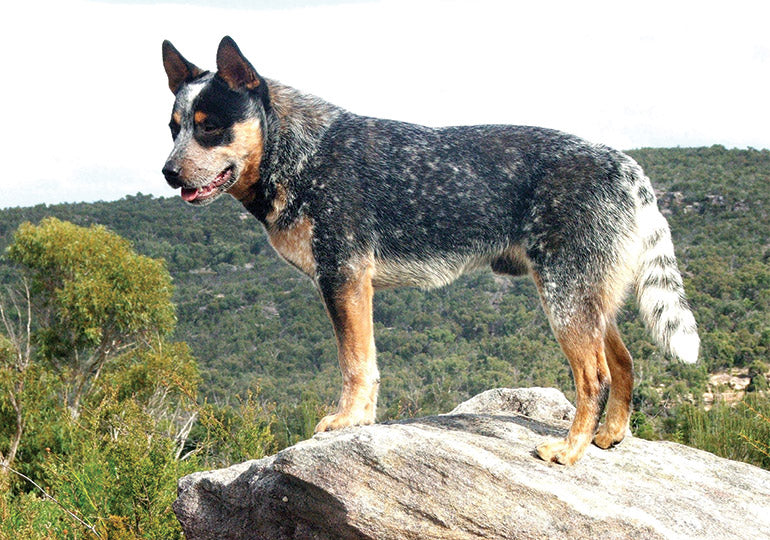Breed Info Summary
Breed Suits: families with children, active lifestyles, companionship
Shedding/Non-Shedding: Moderate
Size: Medium
Origin
The Australian Cattle Dog, also known as the Blue Heeler or Queensland Heeler, originated in Australia. It was developed in the 19th century by Australian settlers to handle the unique demands of herding and driving cattle in the rugged Australian outback. The breed was created by crossing the working dogs brought to Australia by early European settlers with other breeds known for their endurance and herding abilities, such as the Australian Kelpie. The resulting breed, the Australian Cattle Dog, was specifically bred for its intelligence, agility, and herding instincts to excel in working cattle in the harsh Australian conditions. Today, Australian Cattle Dogs are still used as working dogs on farms and ranches worldwide and are also popular as loyal and active companions.
Personality
The Australian Cattle Dog possesses a distinct and notable personality. Renowned for their intelligence, these dogs are quick thinkers and adept problem solvers. They exhibit a remarkable level of alertness and vigilance, always on the lookout for potential threats. With boundless energy, they thrive in active environments and require ample exercise and mental stimulation.
Australian Cattle Dogs are independent and strong-willed, which can make training a challenge at times, necessitating firm and consistent guidance. However, their loyalty and protectiveness towards their family are unwavering, making them excellent companions and guardians. Their work ethic is deeply ingrained, as they were bred for herding cattle, and they are content when they have a purpose to fulfil. Overall, the Australian Cattle Dog is a highly intelligent, active, and devoted breed, best suited for experienced owners who can provide them with the mental and physical stimulation they need.
Pros and cons to consider
Pros
- Intelligent and highly trainable for various tasks
- Active and energetic, making them great companions for active lifestyles
- Loyal and protective of their family
Cons
- Requires a lot of physical and mental stimulation
- May exhibit nipping or herding behaviour if not properly traine
- Can be reserved or wary of strangers


